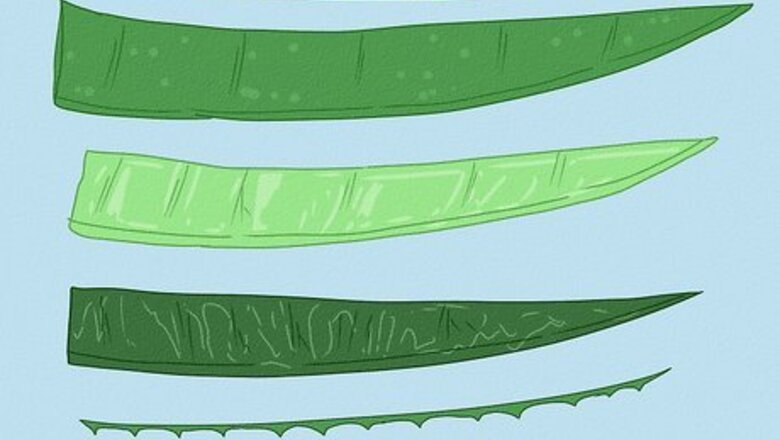
views
Removing Aloe from the Leaf
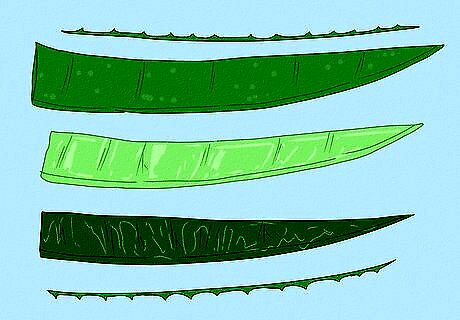
Remove the top, bottom and outer edges of the leaves. The aloe leaf is made up of three parts, the rind on the outside, the latex in the middle, and the gel on the inside. Though they each provide their own benefits, the gel is most useful for skincare and beauty purposes. By cutting off the edges of the rind, you’ll make it easier to peel or scrape the gel away. Be sure to grab a cutting board and be ready for a mess as you go. Cut a larger portion off the bottom if you're using store-bought leaf. Referred to as the root, this section can get dried out and can prevent you from getting at the meat of the plant. If you’re using a plant at home, cut about one inch off of the stem. Watch out for the spines as you cut. While not quite as dangerous or painful as a cactus spine, the edges of an aloe vera leaf are serrated and can be sharp. The good news is that aloe serves as an antibacterial, and should clean any wounds you incur..
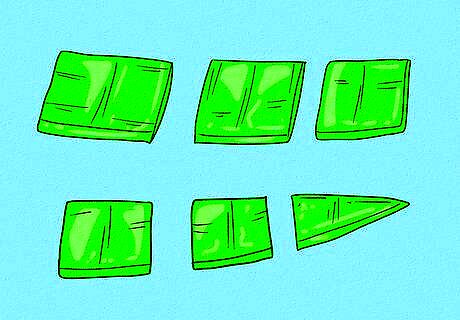
Cut your aloe leaf into two-inch segments. Aloe leaves can be very long, and their gel can make them hard to handle. Operating with smaller segments should reduce slippage and make your efforts easier. Conserve your aloe. Even the small, two-inch segments will go a long way. The raw gel extracted from one of these sections is capable of coating both your hands and arms. Be careful to use only what you need.

Cut away the rest of the rind. Be sure to extract as much pulp from the leaf as possible. Use your fingers if you have to, and manually peel the rind away. Use the same method on the other side of the leaf, until all of the gel is free. If you're short on time, gel from the aloe plant can be used without any frills. Feel free to rub the plain, extracted pulp on your skin. Just remember to cut off and use only what you need. Without any preservatives, aloe will go bad quickly.
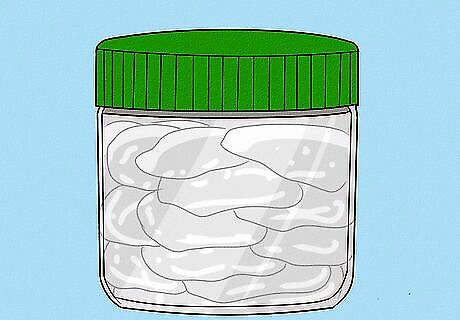
Prepare your gel base. Using what you’ve extracted, you can now make an aloe vera gel. Not only is this the foundation for a number of household products, it’s a quick and easy go to for cuts and burns.
Putting Aloe to Use
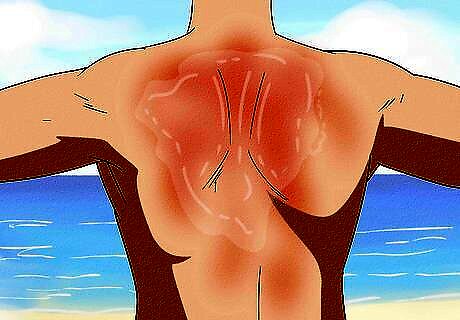
Treat a sunburn by applying a liberal coating of aloe. There’s a reason aloe is the first thing to come to mind when fun in the sun goes awry. Applying a liberal coating of aloe vera can aid in the healing process. The moisturizing properties also help diminish the flaking that accompanies more severe sunburns. Add a little extra relief by refrigerating your gel. Sunburned skin is hot to the touch and can be very uncomfortable. By applying a cooler gel, you’ll not only add that much needed moisture to your skin, but the stinging will ease as well.
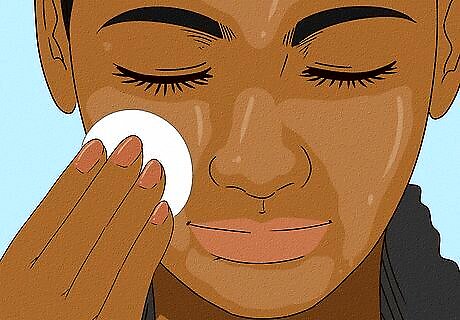
Remove makeup with a mixture of oil and aloe. Mix your gel with coconut, jojoba or olive oil. Use enough of the mixture to lightly cover a cotton pad, then apply to your face. This will remove stubborn, stuck on foundation. Residual makeup can clog pores and lead to breakouts. Clean off waterproof mascara, eyeliner and eyeshadow with aloe. Not only does this method work on foundation and primers, it will also clean away any stuck on pigments. Say goodbye to stained pillowcases! Research your oils before putting together your makeup remover. Not every oil will work for your skin type. Adding a drying agent such as olive oil to already dry skin will cause irritation, or possibly even worse breakouts. On the other hand, adding the wrong moisturizing agent can make skin greasier and more prone to breakouts as well.

Combine your skin treatment with aloe vera to fight acne. While makeup removal is a big step in the battle against acne, it’s not the only line of defense. Aloe vera can increase reduction of acne by soothing your skin after harsher acne treatments. Once you’ve finished your usual acne treatment, apply a thin layer of aloe vera to your skin. Wash your face at least daily. While overwashing can irritate your skin further, not washing your face enough can cause grime to build up and worsen breakouts. Remember to add aloe after each wash.
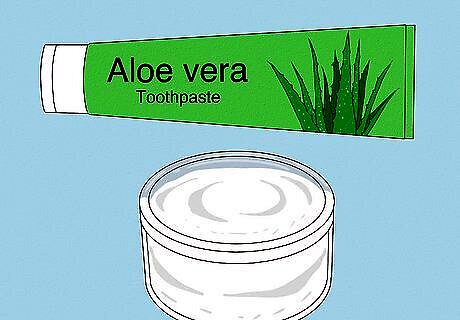
Clean up your mouth by adding aloe to your toothpaste. Using aloe vera toothpastes instead of triclosan toothpastes like Colgate Total can improve the health of your mouth. Aloe-based toothpastes can cut down on plaque build-up and inflammation from gingivitis, meaning a whiter smile and healthier gums. Make your own aloe vera toothpaste. While aloe vera toothpaste can be purchased, you can brighten your smile from home, too. Combine aloe vera gel, vegetable glycerine and baking soda for your own natural take on plaque-fighting. Add a little mint for a fresh taste, and put it in a sealed container.
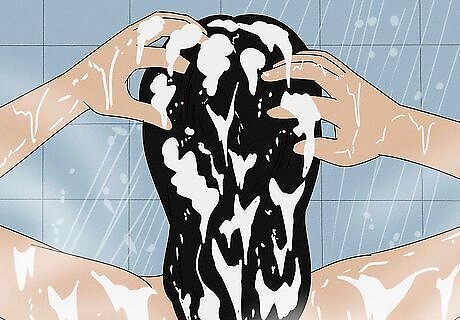
Give new life to damaged hair by using aloe vera as a shampoo. Adding aloe into your hair care mix can re-hydrate and rejuvenate ailing locks. Aloe vera can strengthen your hair strands, preventing breakage. Aloe vera has also been attributed to aiding scalp health, further preventing the aforementioned breakage. Use two tablespoons of aloe vera and apply from root to tip, being careful not to miss any spots. When you’re finished, wrap your head in a bag or a towel and allow for the aloe vera to sit. Wash it out after 30 minutes. Go the extra mile and pamper your scalp. Add a drop of tea tree oil and Vitamin D to two tablespoons of water and aloe vera. Not only does the tea tree oil leave your scalp feeling fresh, but it also cuts down on unnecessary chemicals being added into your beauty regime.
















Comments
0 comment